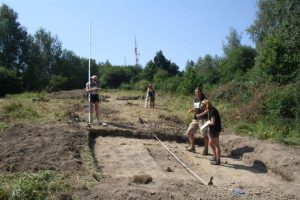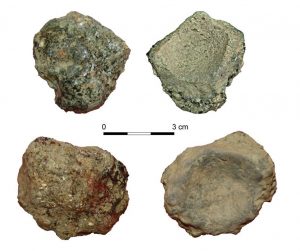Excavations at Grojec hill in Żywiec, southern Poland, revealed numerous glass artefacts and half-products that indicate a glass workshop operated there 2000 years ago. This might be the possible oldest glass production site in Poland.

The Grojec hill is located in the central area of the Żywiec Basin and provides a natural observation spot of the surrounding landscape. It was occupied since 6th-5th cent. BC, according to the latest archaeological finds, such as remains of numerous kilns, some of which were used for production of metal and glass, indicating intense economic activity in the area.

Raw materials, such as bars of glass and metal, were delivered here and served for production of particular objects. According to the researchers, the most interesting group of finds are the traces of glass production, such as artefacts found nearby the kilns in form of glass side-products, heavily melted lumps of glass, and crushed fragments of raw glass.

Other glass finds include typical glass “tears”, being side-products of glass production as well as whole blue and violet glass beads. Another find indicating the site was used for industrial activity was a well-cistern feature, discovered nearby. Water was very important for the production of metal, which was formed using crucibles and grinding tools, such as these found during excavations. The exact purpose of these tools is said to be revealed through specialist analysis.

In the vicinity of the site archaeologist were able to discover few housings dated to over 2000 years in the past, but there is no certain answer who was responsible for establishing the industrial site. According to the researchers it well might have been a local population of members of Celtic tribes who mastered the art of glass production. This is expected to be revealed by scheduled analysis of the raw glass material that should point its place of origin – possibly southern Europe or Mediterranean areas.

(after Nauka w Polsce & Tomasz Gralak)